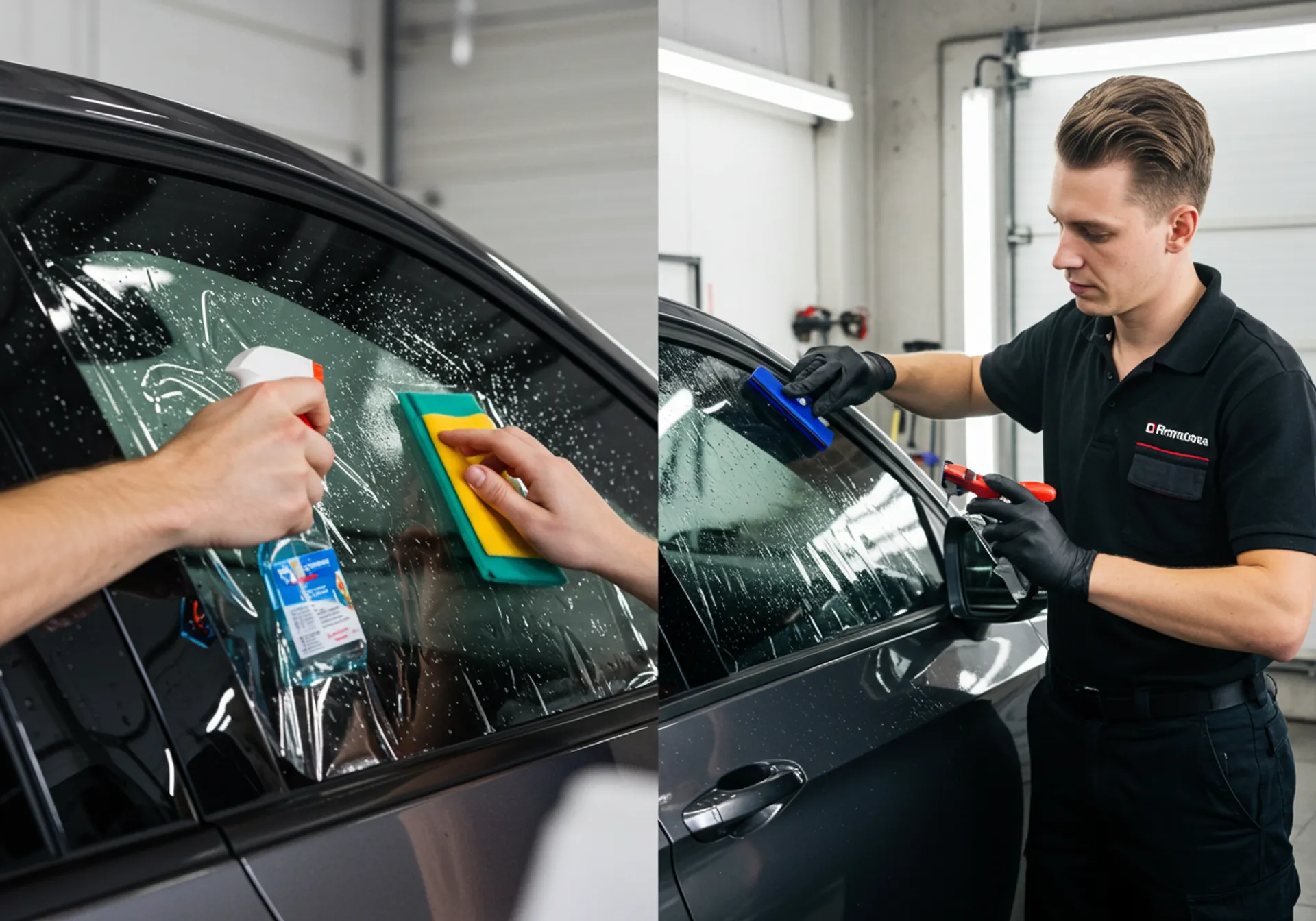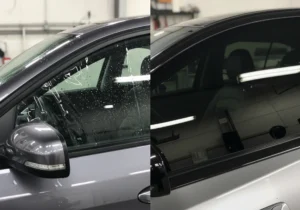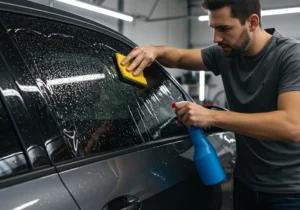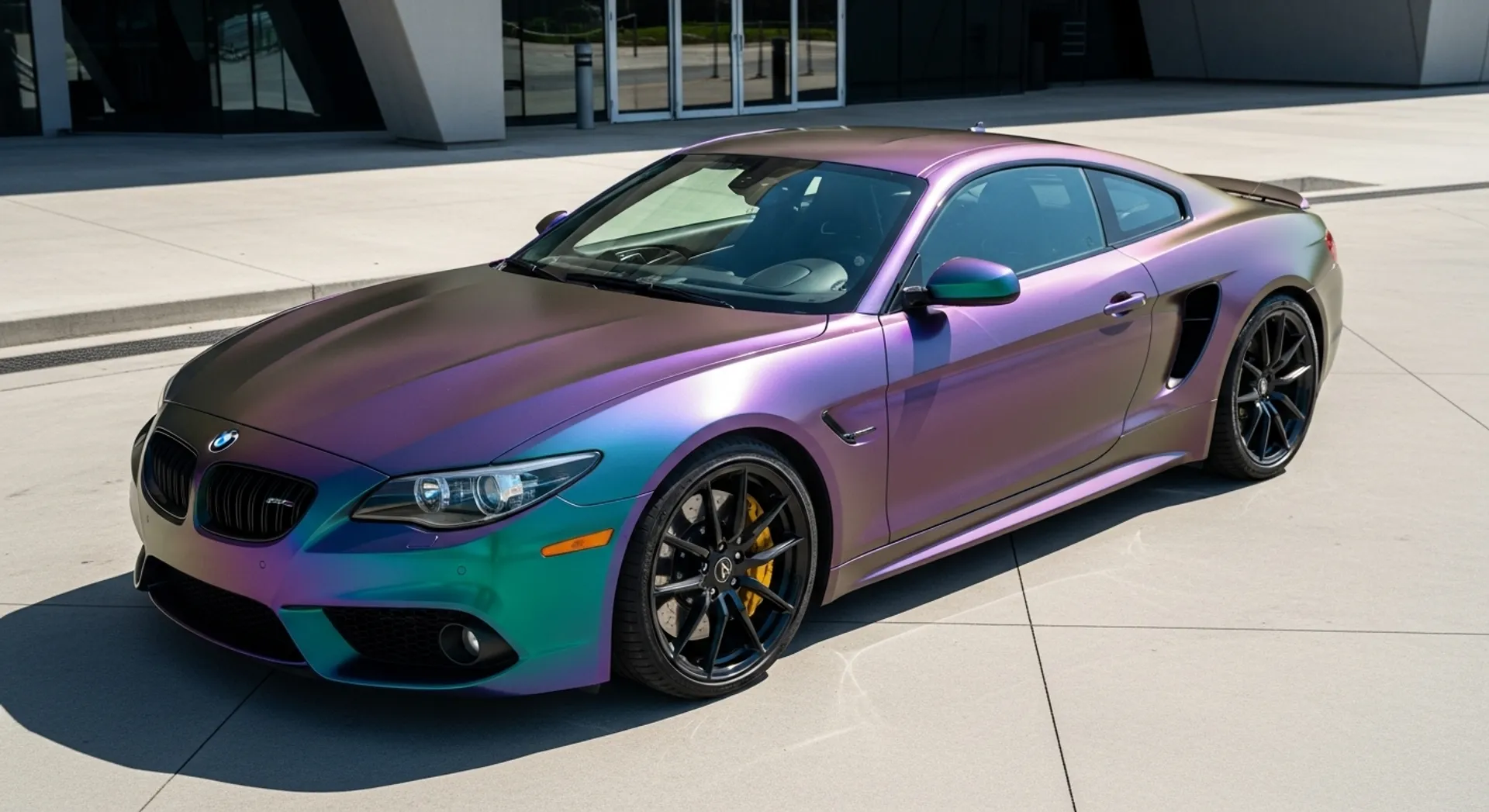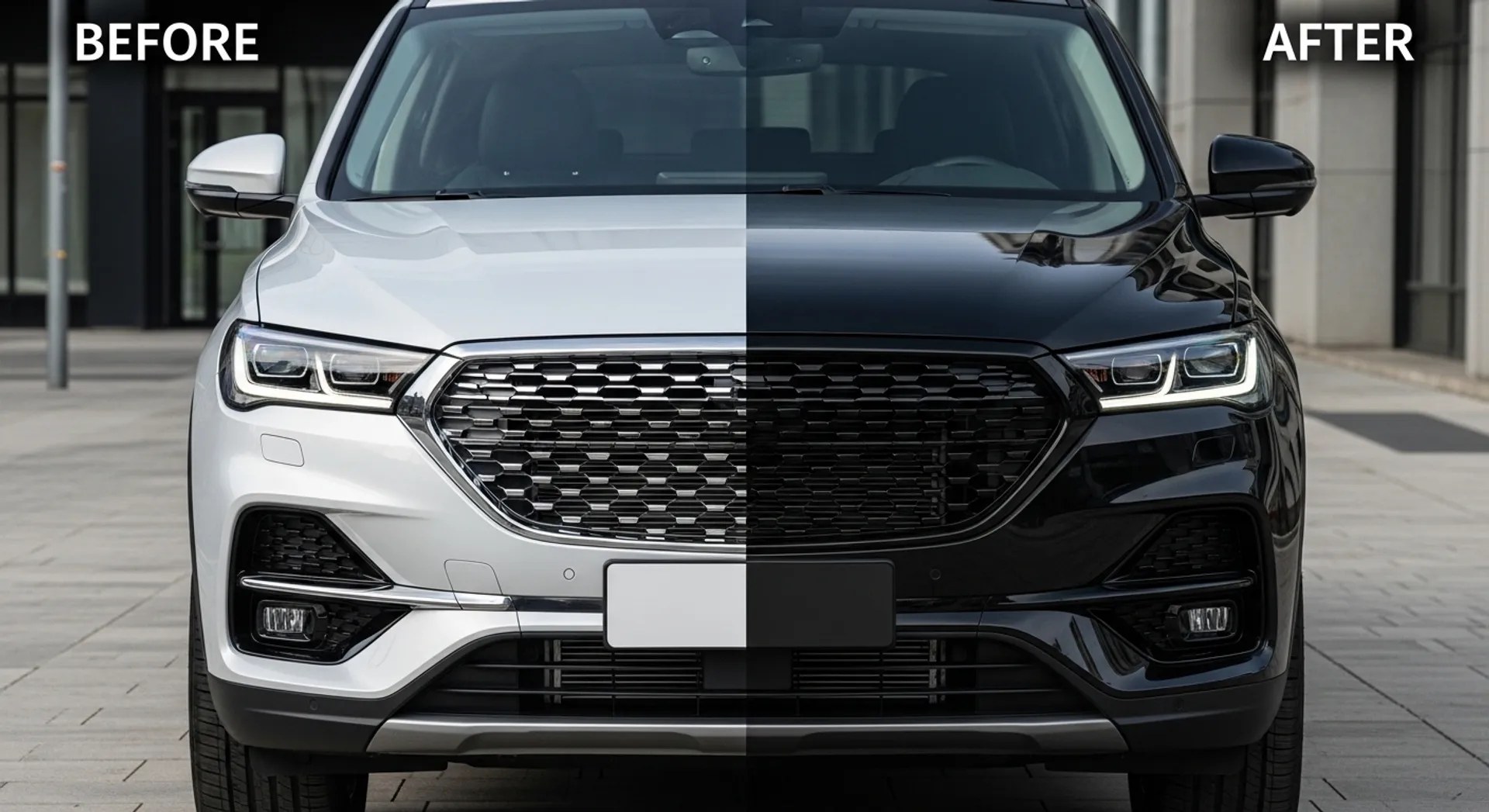Window tinting involves applying a dark film over windows, serving multiple purposes. It protects against harmful UV radiation, enhances privacy and security, and aids in temperature regulation by reducing heat gain or loss through windows. Common applications of window tinting include:
- Residential
- Automotive
- Commercial
Choosing the right installation method is crucial to achieving optimal results. Whether you opt for DIY window tinting or professional window tinting, understanding the benefits and drawbacks of each approach will help you make an informed decision that suits your needs and expectations.
Benefits of Window Tinting
1. UV Protection
Window tinting significantly reduces the amount of ultraviolet (UV) radiation that penetrates through the glass. Prolonged exposure to UV rays can cause skin damage and increase the risk of skin cancer. By blocking up to 99% of harmful UV rays, tinted windows offer a layer of protection for you and your family. Additionally, UV protection helps prevent fading and damage to interior furnishings, preserving the longevity of your furniture, carpets, and other decor.
2. Privacy Enhancement
Tinted windows enhance privacy by reducing visibility from the outside while maintaining a clear view from the inside. This is particularly beneficial for homes and vehicles parked in busy areas where privacy might be compromised. Tinted windows act as a deterrent for potential intruders by obscuring their view of valuables inside, thereby adding an extra layer of security.
3. Heat Reduction
One of the key benefits of window tinting is its ability to regulate indoor temperatures. Tinted films reduce solar heat gain by reflecting a significant portion of sunlight away from the glass. This results in cooler indoor temperatures during hot weather, reducing reliance on air conditioning systems and leading to energy savings. During colder months, window tinting also helps retain heat within the building, contributing to better insulation and reduced heating costs.
4. Practical Benefits in Different Settings
Residential Benefits:
- Enhanced comfort through temperature regulation
- Increased privacy
- Protection against UV damage to interiors
Automotive Benefits:
- Improved driving comfort with reduced glare
- Enhanced privacy
- Interior protection from UV radiation
Commercial Benefits:
- Lower energy costs due to better temperature management
- Increased security with obscure visibility into office spaces
- Preservation of office furnishings
Understanding these benefits can help you make an informed decision when considering window tinting for your specific needs.
DIY Window Tinting
DIY window tinting puts you in direct control of the installation process. The approach appeals to many homeowners and car enthusiasts who prefer hands-on projects or want to save on professional service costs. Most do-it-yourself tint application kits are available at auto parts stores, online retailers, or specialty home improvement shops.
Typical Materials and Tools Required
To get started with DIY window tinting, you’ll need a specific set of materials and tools:
- Pre-cut or roll window film (often available in various tints, shades, and finishes)
- Spray bottle with soapy water or application solution
- Squeegee or hard plastic card for smoothing the film
- Razor blade or precision knife for trimming excess film
- Cleaning cloths and lint-free towels
- Heat gun or hair dryer (optional, for contouring around curves)
These kits often include step-by-step instructions, but results depend heavily on individual skill and attention to detail.
Advantages of DIY Window Tinting
Several benefits make DIY window tinting an attractive choice:
- Cost Savings: You avoid labor fees by handling the work yourself. The only expenses are the film and basic tools.
- Convenience: No need to schedule appointments or wait for availability — you work on your own timeline.
- Customization: Full control over the type of film, shade level, design accents, or decorative elements.
For people who enjoy projects around the house or customizing their vehicles, this method adds a personal touch. Testing out new styles is easier when you aren’t committed to a single professional installation.
DIY Pros and Cons: Challenges to Consider
The flexibility of do-it-yourself tint application comes with trade-offs:
“A flawless finish demands patience and practice.”
Common challenges include:
- Skill Requirements: Applying film without creases, bubbles, or gaps takes steady hands and experience.
- Application Errors: Mistakes like uneven alignment, trapped dust, or air bubbles can leave windows looking worse than before. Here are some tips that could help in addressing such issues.
- Hidden Costs: Damaged film from repeated attempts means buying extra rolls. Specific tools like high-quality squeegees may add unexpected expense.
Many first-time installers underestimate how difficult it is to achieve a seamless look. Even small errors may lead to peeling edges or bubbling within weeks. In some cases, trying to fix mistakes ends up costing more than hiring a professional from the start.
Careful research into best practices and investing in higher-quality kits can help minimize these risks for DIY enthusiasts looking to tackle their own tinting project.
Professional Window Tinting Services
Professional window tinting offers a comprehensive solution that uses specialized equipment and trained installers’ expertise. The process involves several steps to ensure a flawless application, from precise measurements to using high-quality materials.
Installation Process
- Assessment: A professional will begin by assessing your windows to determine the appropriate type of film based on factors such as window size, shape, and material.
- Preparation: The windows are thoroughly cleaned to remove any dirt, debris, or existing film that could interfere with the new application.
- Cutting: Using specialized tools, the tint film is cut to exact dimensions to fit each window perfectly.
- Application: The film is carefully applied using techniques that minimize bubbles and ensure smooth adhesion.
- Final Inspection: After installation, professionals conduct a detailed inspection to ensure there are no imperfections and that the film adheres properly.
Advantages
- Expert Quality: Professional installers have extensive experience and access to high-quality materials, resulting in a superior finish.
- Precise Measurements: Professionals take exact measurements of your windows, ensuring the film fits perfectly without cutting errors or misalignments.
- Warranties: Many professional services offer warranties on their work, covering issues like bubbling, peeling, or installation defects.
Disadvantages
- Higher Cost: Professional services come at a premium due to labor charges and the use of advanced materials.
- Limited Customization Options: While professionals can offer various types of films, some specific customizations might not be available compared to DIY approaches.
- Scheduling Inconvenience: Booking an appointment may require waiting for availability, which can be less convenient if you have a tight schedule.
The benefits of professional window tinting often outweigh the drawbacks for those seeking long-term durability and quality. Experts possess the skills and tools necessary to avoid common pitfalls associated with DIY installations. While the initial cost may be higher, the investment often pays off through enhanced performance and longevity of the tinting job.
Professional window tinting ensures that your investment is protected by warranties and expert craftsmanship. This peace of mind is something that DIY methods may not always guarantee.
Choosing Between DIY and Professional Tinting Methods
When deciding between DIY and professional window tinting methods, several factors should be taken into account to make an informed choice.
1. Cost-effectiveness comparison
DIY window tinting often appears more affordable due to the elimination of labor costs. However, consider the potential for mistakes that could lead to redoing the work or purchasing additional materials. Professional services, while more expensive initially, usually ensure a high-quality application that may save money in the long run by avoiding frequent replacements.
2. Long-term durability assessment
The longevity of window tinting depends significantly on the quality of installation. Professional installers use specialized tools and techniques to ensure a durable finish. In contrast, DIY applications are prone to errors like bubbles or peeling, which can reduce the lifespan of the tint.
3. Skill level assessment
Successful DIY tinting requires a certain level of skill and patience. If you’re confident in your ability to apply the film smoothly and evenly, DIY might be suitable. However, professional installers have extensive experience and training to handle various types of windows and films efficiently.
Considering these aspects will help you evaluate whether the initial savings with DIY are worth potential future costs or if investing in professional services provides better value over time.
Selecting the Right Tint Film Type for Your Needs
Choosing the right tint film type is crucial for achieving optimal results. Various factors play a role in this selection process, particularly the characteristics of the glass on which the film will be applied.
Key Considerations:
- Glass Compatibility: Different types of glass require specific tint films to ensure proper adhesion and performance. For example, certain films are better suited for tempered glass, while others may be ideal for laminated or double-pane windows.
- Performance Issues: Using an incompatible tint film can lead to issues such as peeling, bubbling, or poor temperature regulation. This not only affects the appearance but also diminishes the functional benefits of window tinting.
- Durability and Longevity: High-quality films designed for specific glass types tend to offer better durability and longer-lasting performance. This reduces the need for frequent replacements and maintenance.
Examples of Tint Film Types:
- Dyed Films: These are affordable and provide good privacy, but may not offer strong heat reduction.
- Metalized Films: Known for their durability and heat reduction capabilities, though they might interfere with electronic signals.
- Ceramic Films: Offer superior UV protection and heat reduction without signal interference, making them suitable for various settings.
By taking these considerations into account, you can select a tint film that not only enhances the aesthetic appeal but also maximizes functionality and longevity.
Conclusion
Making the right decision about window tinting involves considering a few key factors:
- Budget: Consider the short-term savings of doing it yourself versus the long-term value and durability that come with professional installation.
- Quality Expectations: Consider how much you can tolerate imperfections and how important perfect results are in your space — whether it’s your home, car, or business.
- Desired Outcomes: Identify what matters most to you — privacy, heat reduction, UV protection — and evaluate which option aligns with these priorities.
- Personal Priorities: Reflect on how comfortable you are with hands-on projects, the time you’ll need to invest, and your willingness to deal with potential mistakes.
Every situation is different. For some people, taking on the project themselves brings satisfaction and control over costs. For others, knowing that experts will achieve great results and provide warranty coverage is worth paying the extra cost. DIY vs. Professional Window Tinting: What You Need to Know isn’t just about comparing methods — it’s about matching your resources and expectations with what you truly want from your window tinting investment.

